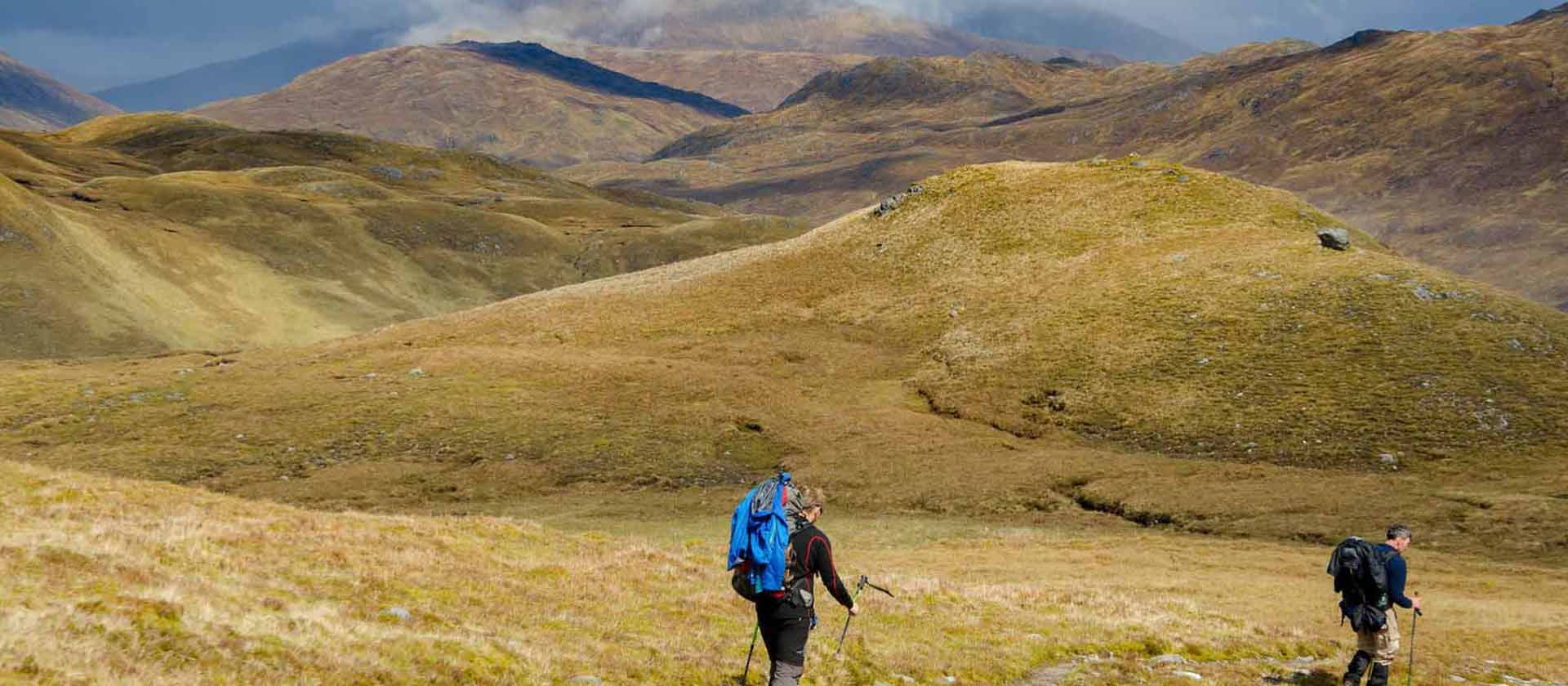
When it comes to taking on a new challenge, what could be more classic or rewarding than scaling a mountain? Steep ascents, unpredictable weather, false summits... once you (finally) reach the top, you'll often find that the mental challenge was just as real as physical.
The UK is a wonderland when it comes to mountains to climb. There's something for every kind of adventurer, whether you're a hardcore hiker or a weekend wanderer.
Here are our top picks of the best mountains in the UK to climb. Time to lace up those walking boots.
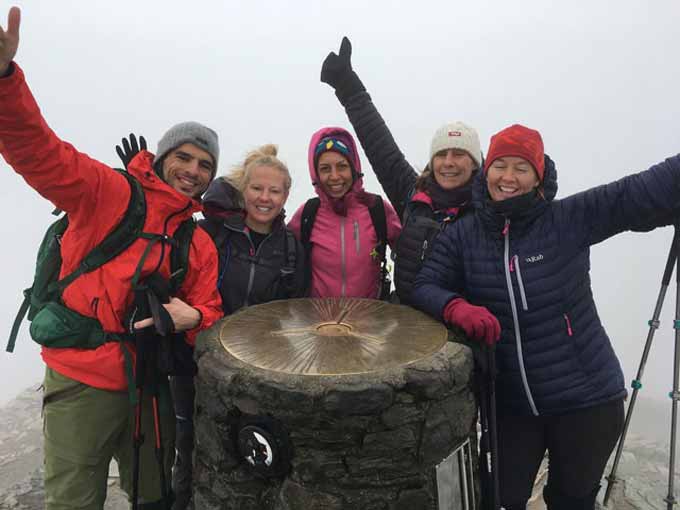
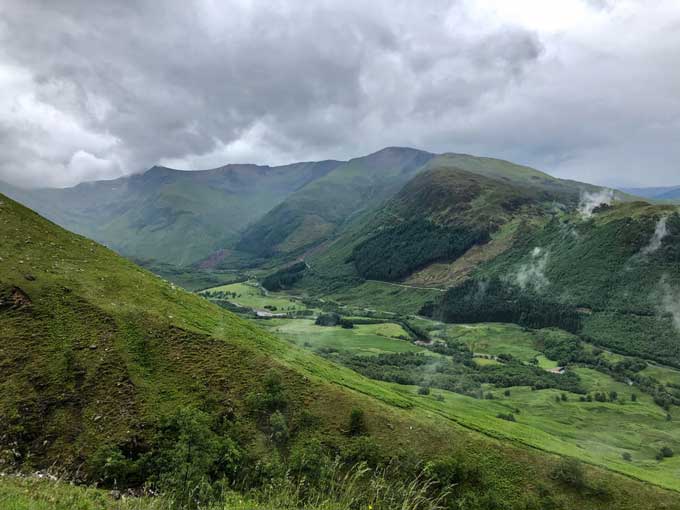
Where: Scotland
Elevation: 1345m
Difficulty rating: 4/5
Great for: Experienced climbers
What else would be first on our list, but Ben Nevis: the tallest mountain in Britain and a once-active volcano. This mountain is all about the drama, with misty peaks, rugged landscapes (bring your camera) and changeable moody weather. Also known as "The Ben", you'll find it near the small Scottish town of Fort William.
Mountain climbers with plenty of experience and looking to test themselves should try scaling the formidable "North Face", one of the UK's highest cliff faces which offers world-class climbing and some pretty spectacular views stretching out to Loch Lomond.
Those looking to ease themselves in more gently can opt for the more popular "Mountain Path" route, which starts at Glen Nevis and winds itself up Ben Nevis. It's also known as the "Tourist Track", but don't let that put you off: it doesn't get stupidly busy, especially in the shoulder seasons, and still offers one hell of a challenge. Our handy guide gives you all the info you need to plan your own successful ascent.
Still not got your fill after that? Try Ben Macdui, Scotland's second highest mountain in the Cairngorms with unbelievable views.
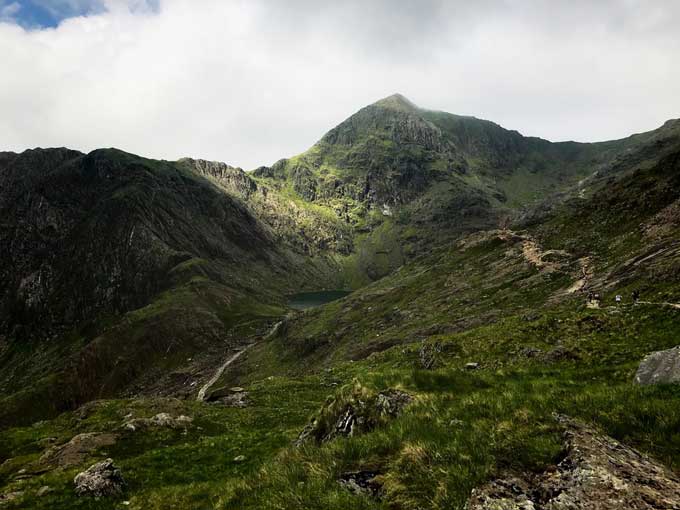
Where: Wales
Elevation: 1085m
Difficulty rating: 3.5/5
Great for: Hikers of all levels (depending on the route you take)
Another of the UK's heavyweights, Snowdon is the highest peak in Wales and part of Snowdonia National Park. This may be why it's also one of the most popular mountains to climb in the country, so bear in mind you may not be the only one trying to reach the summit, particularly in the summer.
Still, you've got eight routes to the top to choose from. Llanberis Path is the most popular, while you might find others like the Pyg Track and the Rhyd Dhu Path are a bit quieter.
Once you reach the peak, you'll find a visitor centre - great for finding an accessible toilet and having a cup of tea, less great for that wild hiking experience. Still, the views are epic, reaching out all the way to Anglesey, Pembrokeshire and Ireland. There's no two ways about it: Snowdon is an institution that we reckon every kind of walker should tackle at some point.
Check out our complete guide to climbing Snowdon. If you're after more of a challenge, climb it as a part of the National Three Peaks Challenge.
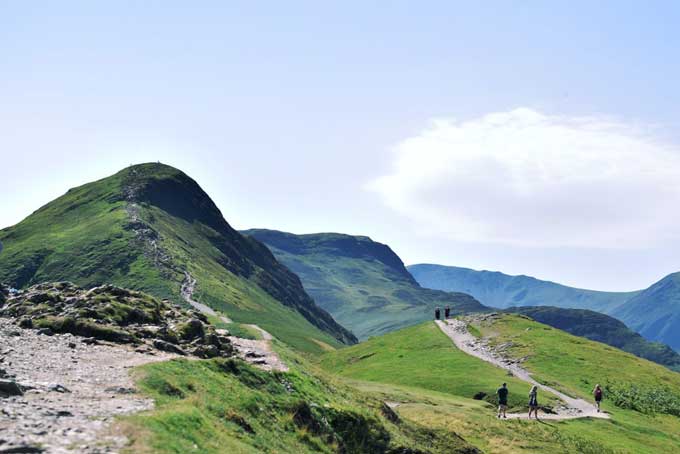
Where: Lake District
Elevation: 451m
Difficulty rating: 2/5
Great for: Beginner walkers and families
Looking for a gentle challenge to ease you into this whole "I-just-scaled-a-mountain" thing? Look no further than Cat Bells, a lakeland peak that offers all the benefits of a hard hike - steep scrambles, rugged terrain, incredible scenery - all with a height of only 451 metres above sea level.
There are plenty of routes you can walk, most of which will take you around 2-3 hours to complete. On a clear day, you'll catch views of classic lakeland scenery, including highlights like Derwentwater and Skiddaw.
The mountain's name apparently derives from "cat's bield", meaning "wild cat's lair", from days gone by when you might have spotted one roaming the countryside. These days, you're more likely to run into friendly ramblers, making this a great option if you're visiting the Lake District.
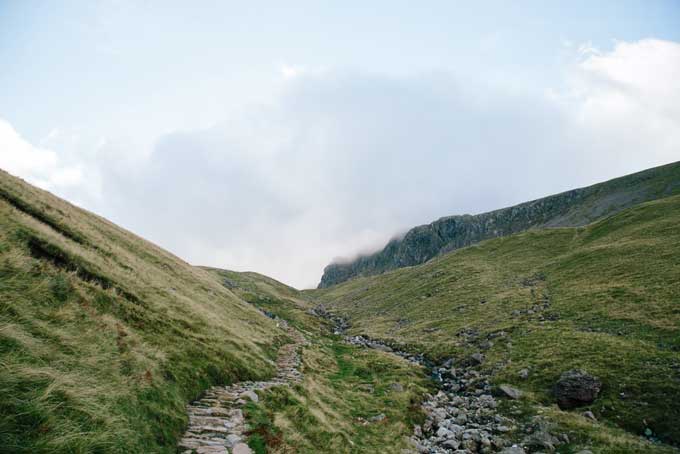
Where: Lake District
Elevation: 978m
Difficulty rating: 4/5
Great for: Intermediate to experienced hikers
Welcome to Scafell Pike, Lake District and England's highest mountain and quite the contrast from Cat Bells. It's perhaps most famous for its incredible (and seriously far-reaching) views. On good-weather days, you'll be treated to vistas of all four nations of the British Isles: England, Scotland, Ireland and Wales.
Scafell Pike will take you about two hours to climb, and you can take your pick from varying difficulties when it comes to routes. Some are gentle and winding, others involve scrambling up near-sheer cliffs. The decision is yours.
The mountain is also home to the highest standing water in the UK- Broad Crag Tarn, which is set amongst a particularly dramatic and wild part of the walk. In keeping with the rugged atmosphere, there are no buildings on top of Scafell Pike - perfect if you're looking for that true wilderness feel.
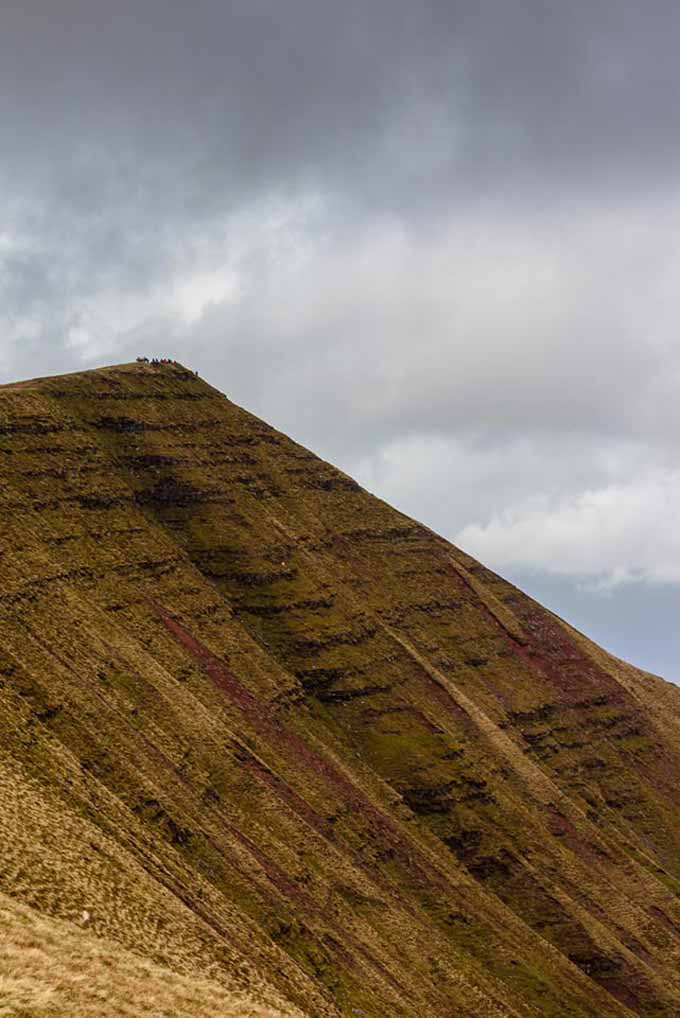
Where: Brecon Beacons
Elevation: 886m
Difficulty rating: 2/5
Great for: Beginners and walkers of all abilities
Another great 'beginner's mountain', Pen Y Fan (Brecon Beacons National Park) still offers a range of routes with varying difficulties. It's the highest peak in South Wales, with well-established paths leading all the way up to the 886m summit.
If you're looking for a challenge, choose the 11-mile route that'll also take you over other mountains in Brecon Beacons National Park, including Corn Du and Cribyn. Or, take on Pen Y Fan as part of the formidable Beacons Way (which funs for a mammoth 99 miles east to west through the park).
Pen Y Fan roughly translates as 'The Top Spot', giving you some clues as to the epic views you'll likely experience a the summit. It might be considered one of the gentlest mountains to conquer in the UK, but you'll still need to bring along your compass, walking boots and waterproof clothing and underwear (being Wales, the weather conditions are nothing if not changeable).
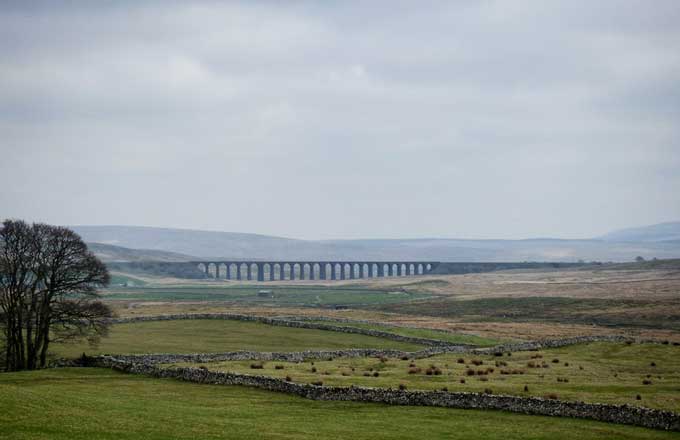
Where: Yorkshire Dales
Elevation: 723m
Difficulty rating: 2/5
Great for: Beginners and weekend walkers
Nestled deep in the Yorkshire countryside, Ingleborough will take around 2.5 hours to climb, making it one of the best mountains for a weekend adventure.
It's the second highest of the fabled Yorkshire Three Peaks Challenge, which also includes the mountains of Whernside and Pen y Ghent. Ingleborough is generally thought of as the people's favourite (don't tell the other two), thanks to its views and interesting geology. Take on all of the peaks (26 miles in total) in 24 hours if you really fancy testing yourself, or Inglebrorough and Pen y Ghent together make a nice in between challenge.
If you're just climbing Ingleborough, seasoned walkers will still find plenty to enjoy - the ascent from Clapham is full of fascinating limestone rock formations like caves and dry rivers. Look out for Two Gill on the lower slopes: a huge cleft where ice forced its way through the rock thousands of years ago. Look out for the remains of ancient stone structures (thought to be Iron Age huts), as well as fascinating shale sections.
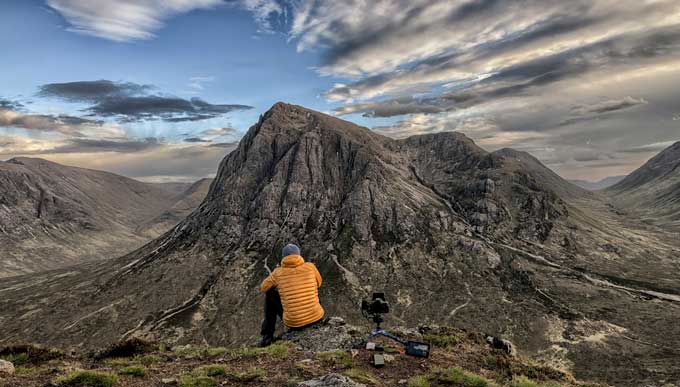
Where: Scotland
Elevation: 1,022m
Difficulty rating: 4/5
Great for: Intermediate and experienced walkers
Buachaille Etive Mòr (termed simply 'The Buachaille' by those in the know) is one of Scotland's celebrated Munros, and also one of the most visually arresting mountains on our list. The sharp, triangular rock summit rises proud between Glen Etvie and Glen Co, and to climb it involves scaling multiple peaks and more than one great ridge. No wonder it's considered one of the UK's best mountains.
The hike can be split into three distinct stages. The first, also considered the most difficult, is the climb to the summit ridge by way of Coire na Tulaich. This is a tough stint, but stick with it: once on the ridge, you'll be treated to the kind of sweeping, wild views mountain climbing dreams are made of. Think vibrant purple heather on the mountainsides, silvery lochs glinting in the sun and formidable grey peaks.
The next section of the climb sees you cover four ridges, while the third is your descent from Stob Na Broige. You may need to use your hands to steady yourself on the potentially slippery rock slabs that mark the zig-zag path on the way down. This gives way to an established track, which will bring you all the way back to the car park.
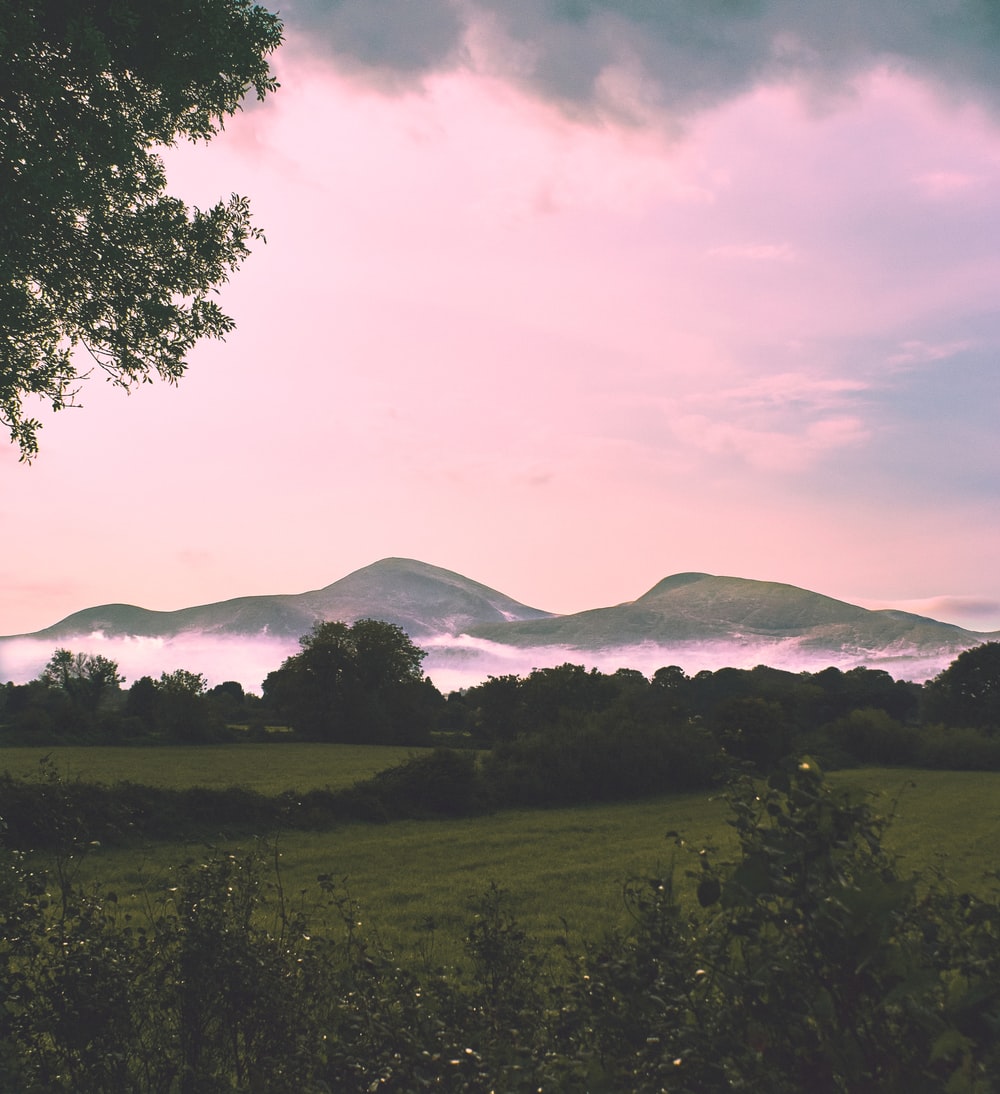
Where: Northern Ireland
Elevation: 850m
Difficulty rating: 3/5
Great for: Walkers and climbers of all abilities
Slieve Donard is Northern Ireland's highest mountain and part of the Mourne Mountains range. It towers over the town of Newcastle in County Down and the Irish Sea: views which make the climb, which gets pretty steep in places, more than worth it. On a clear day, you might even be able to see as far as Scotland and the Isle of Man. Up until the 1830s, walking up the mountain was considered a pilgrimage, and undertaken by worshippers of, you guessed it, Saint Donard.
On your way up the mountain, you'll pass through pretty pine forests, cross the Glen River and also come across the famous Mourne Wall, which was built at the beginning of the 20th century and snakes along the mountain range. Bonus points if you can find the mysterious waterfall and the remains of two ancient burial cairns.
The slightly tougher and less busy route is the Bloody Bridge mountain track (much nicer than it sounds, we promise). You'll walk beside the river until you reach the Bog of Donard, where you'll take a steep path to the summit. Bring your best boots and hiking socks: this section is known for its boggy and muddy parts.
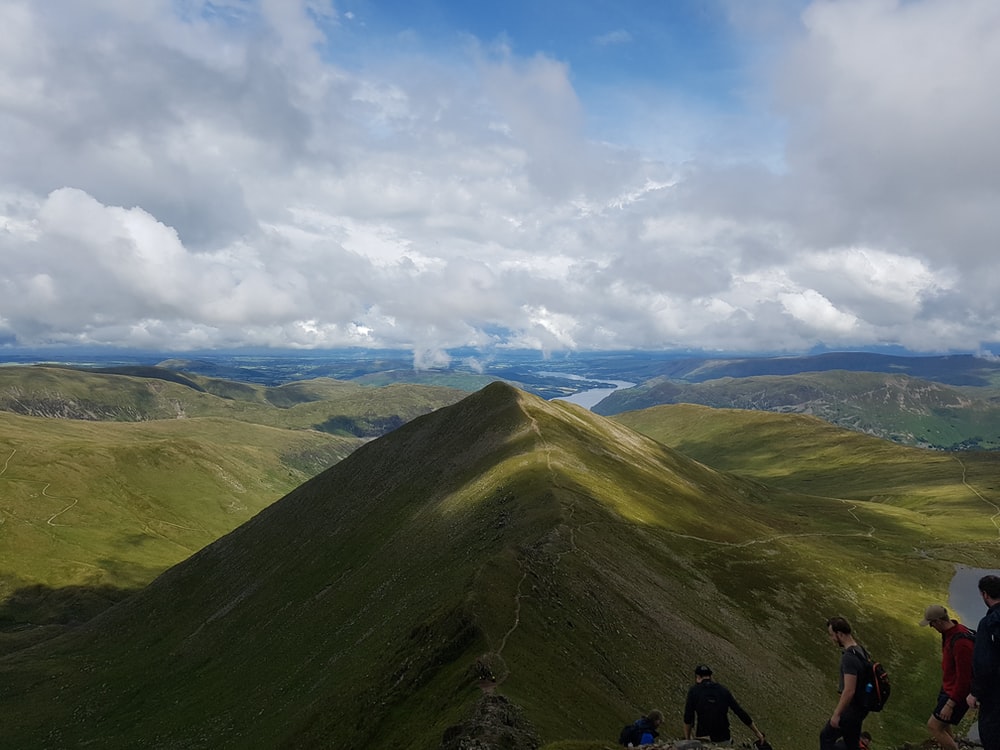
Where: Cumbria
Elevation: 950m
Difficulty rating: 4/5
Great for: Walkers and climbers of all abilities
Helvellyn (Lake District National Park) is the third highest mountain in the Hellvellyn range, and the third highest mountain in the UK.
We reckon the best route to the summit is via Striding Edge, a narrow, rocky ridge with valleys on either side, which provides plenty of 'heart-in-your-mouth' moments (note: this is really tricky and there have been an unfortunate amount of accidents here, so take your time and be careful). There is another, slightly easier, path to the right of Striding Edge.
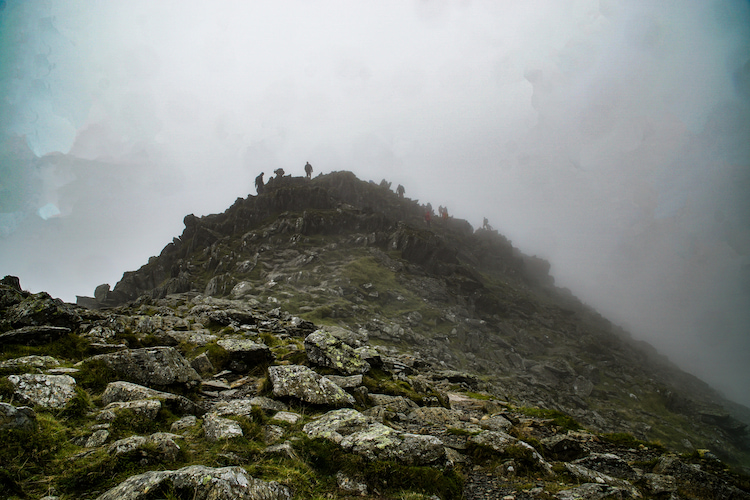
Your way down takes you through Swirral Edge. On this route, you can choose to pass Red Tarn, a small and picturesque lake on the mountain's eastern side, or the route over Catsycam, which offers some of the most impressive views.
Tackling any of the mountains on our list is a great way to escape into nature, get your legs burning and find that all-important sense of achievement (sure beats a weekend spent on the sofa watching Netflix).
Our favourite has to be Helvellyn or Buchaille Etive Mor, though these are certainly whopper days out. If you fancy a smaller peak to whet the whistle, Cat Bells (Lake District) Mam Tor (Peak District) and Ingleborough or Pen y Ghent (Yorkshire) are perfect starter fells.
Did you enjoy our list of the UK's best mountains? Share or leave us a comment below.
Whether you're not ready for hill-climbing or just want to discover even more adventures in the UK, check out our best long-distance walking routes to try.
A very subjective question! But for us it has to be Hellvellyn as it offers something for every ability. Like Snowdon, it has a variety of paths ranging from long and winding, to steep knife-edge ridges. The best mountains are the ones you can conquer several times in different ways as the views can be so different from the other side.
Some people will tell you yes, others will argue Scotland and Wales take the crown. The Lakes probably wins at being well sign-posted, well-connected and offers something for every ability. Snowdonia lures in a lot of climbers and Scotland's mountain paths are generally unmarked or non-existent, so Cumbria arguably fares better for beginners and technical walkers.
Great question. Always check the weather and plan accordingly. Know when to descend; the weather in the UK mountains can be very, very dangerous (I know we don't think of the UK as being that wild but it's mountains claim a lot of lives every year).
Always take a compass and a map (your phone might die), make sure your walking boots are well worn in, pack layers and don't forget sweet treats. They taste better on the fells.
Usually there'll be a trig point or stone pillar at the top to indicate the highest point. Touching this is the final step to reach the summit and earn those bragging rights. Anyway, did a walk even happen if you didn't get a photo with the trig point at the top?
Technically, yes. A mountain is just, well, bigger. A lot of European's think the mountains we call mountains in Britain are in fact all hills... but they have towering peaks that stand at 4,000 metres, so we'll let them have it.
But the satisfaction you'd get from walking up a hill would be just the same. Burning thighs, great views, the sweet taste of a mars bar at the top. Walking anywhere will make you feel good, whether it's up a mountain, a hill, or just into your local woods.
Absolutely. Mountain weather is not like the weather anywhere else and generally the forecast on your phone won't be overly reliable. Check the Mountain Weather Information Service (MWIS) for a more accurate forecast, they actually employ people to run up mountain every morning and report on the conditions. Coolest job ever?